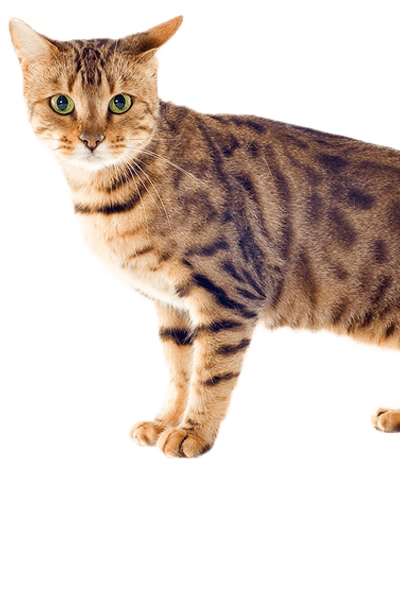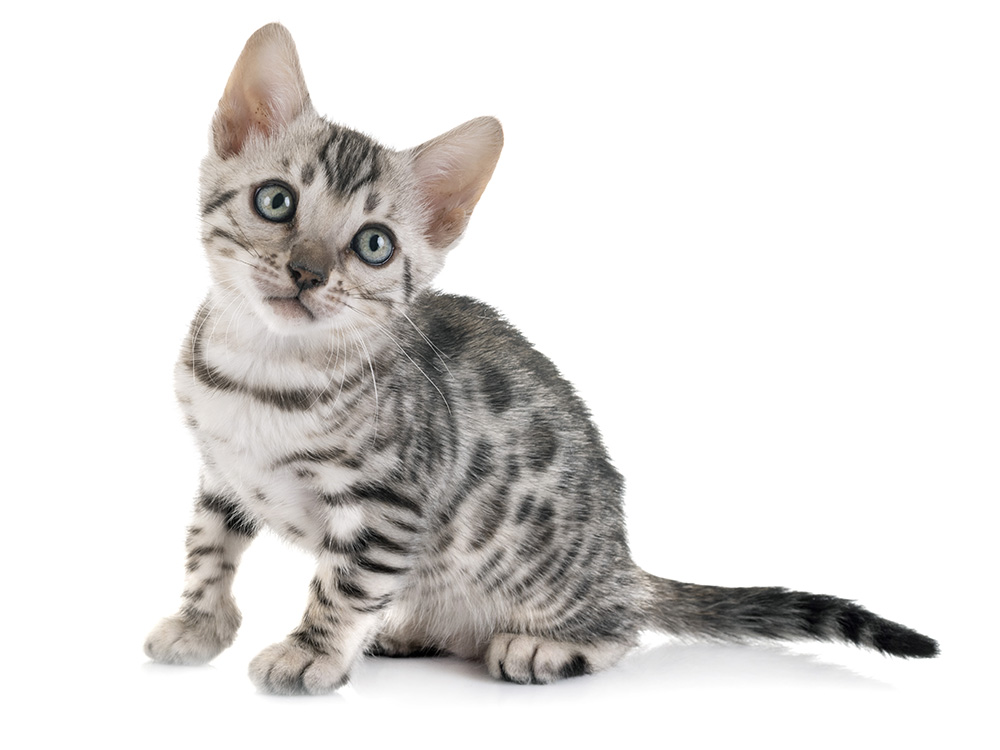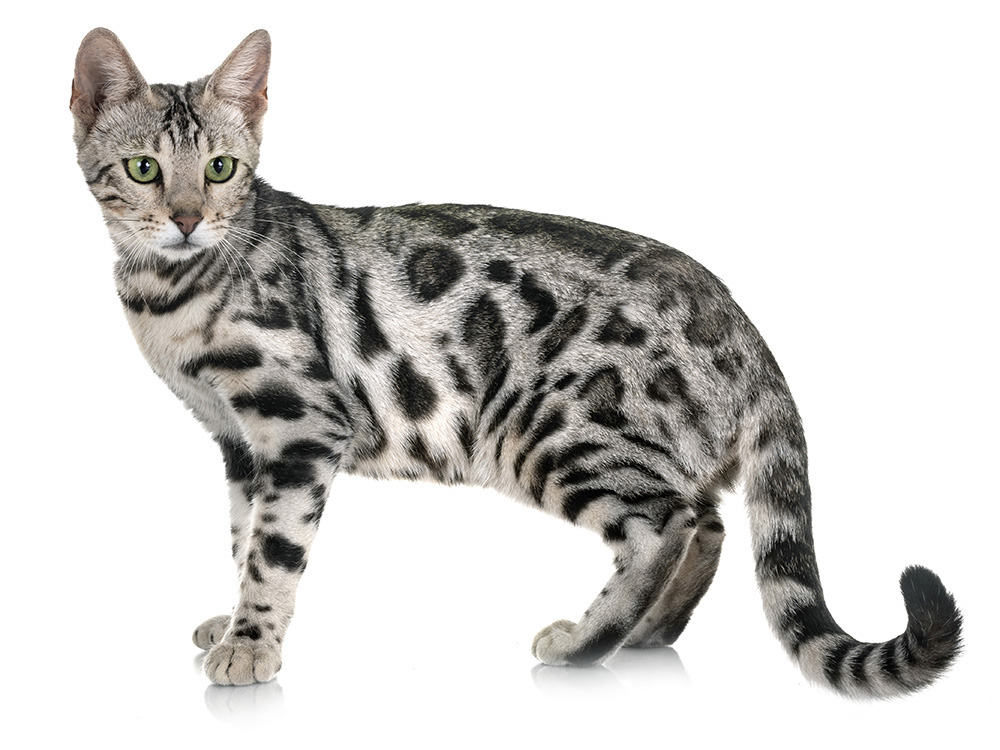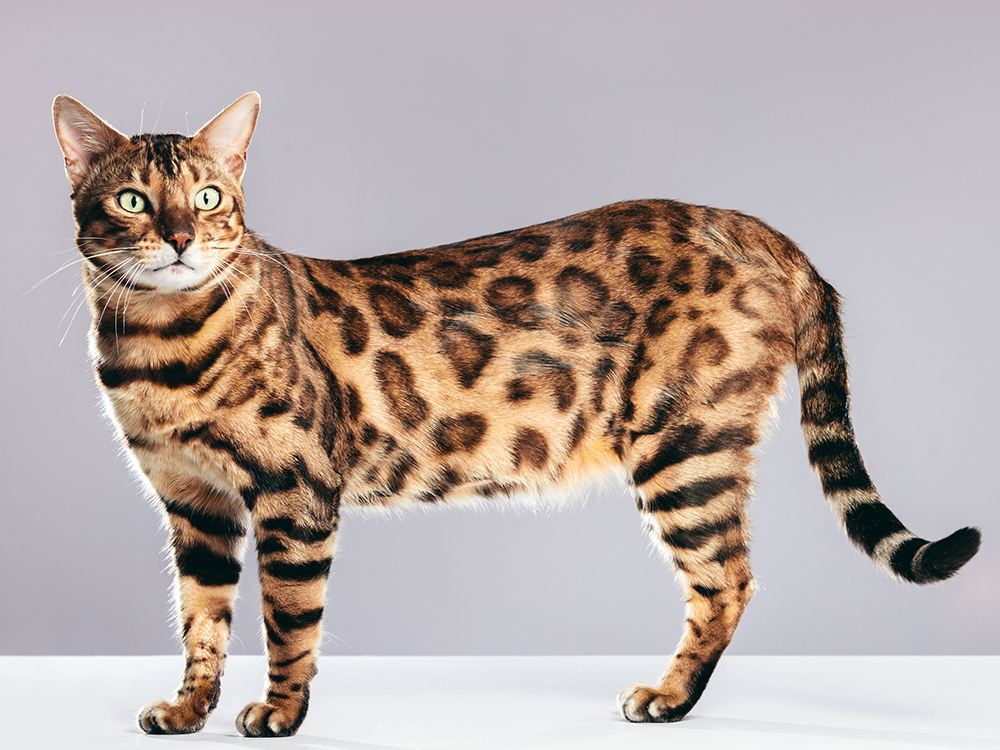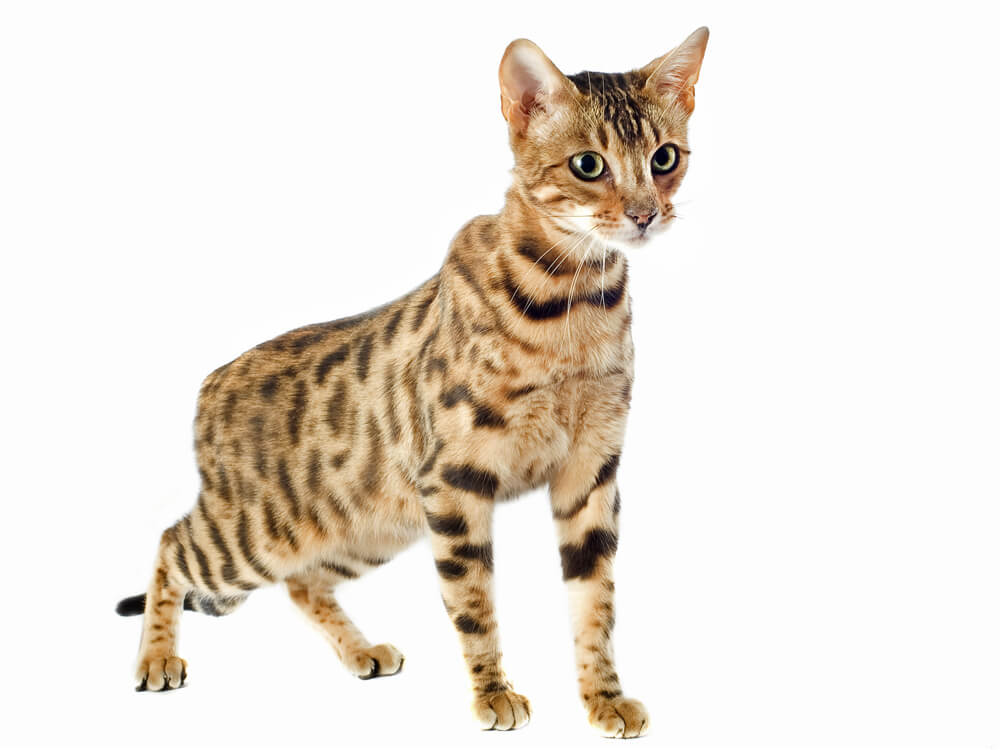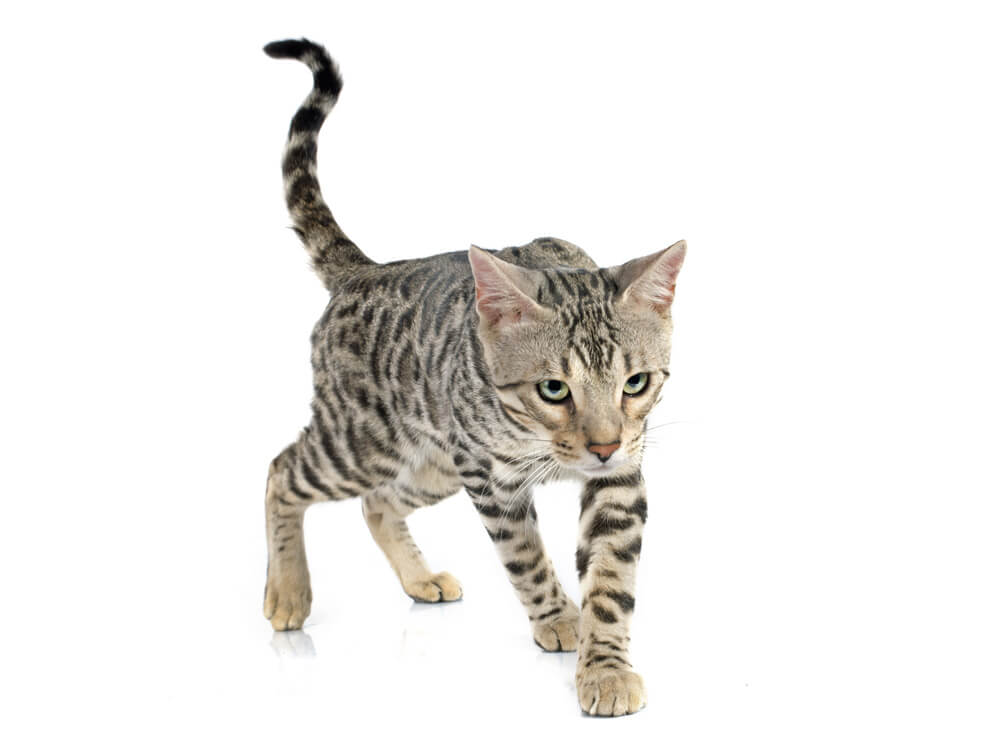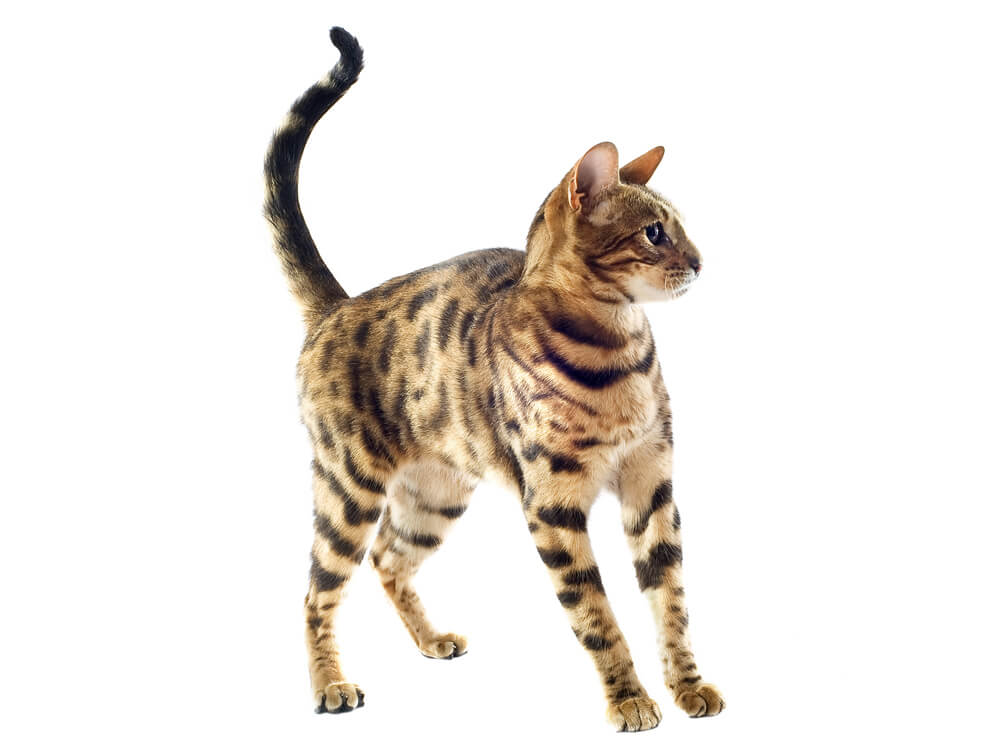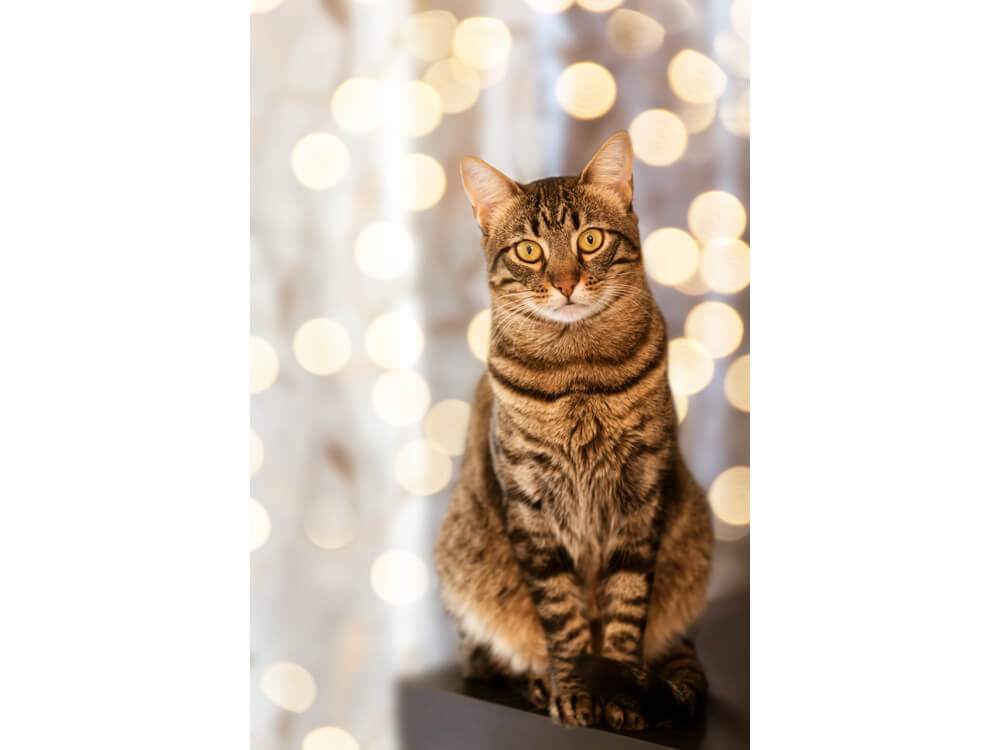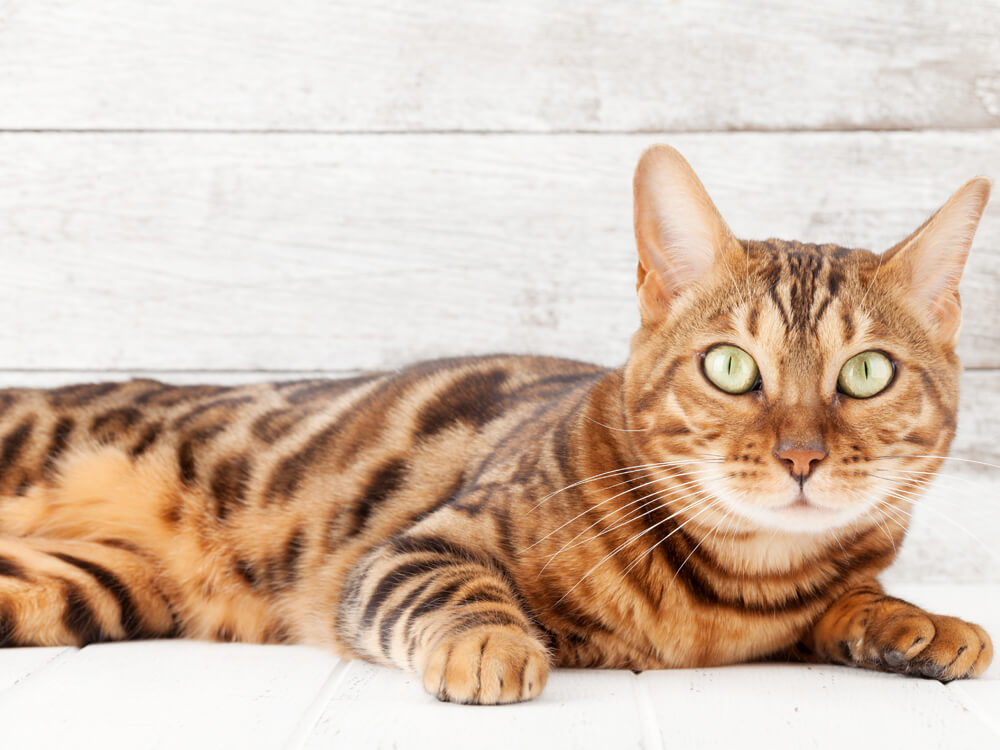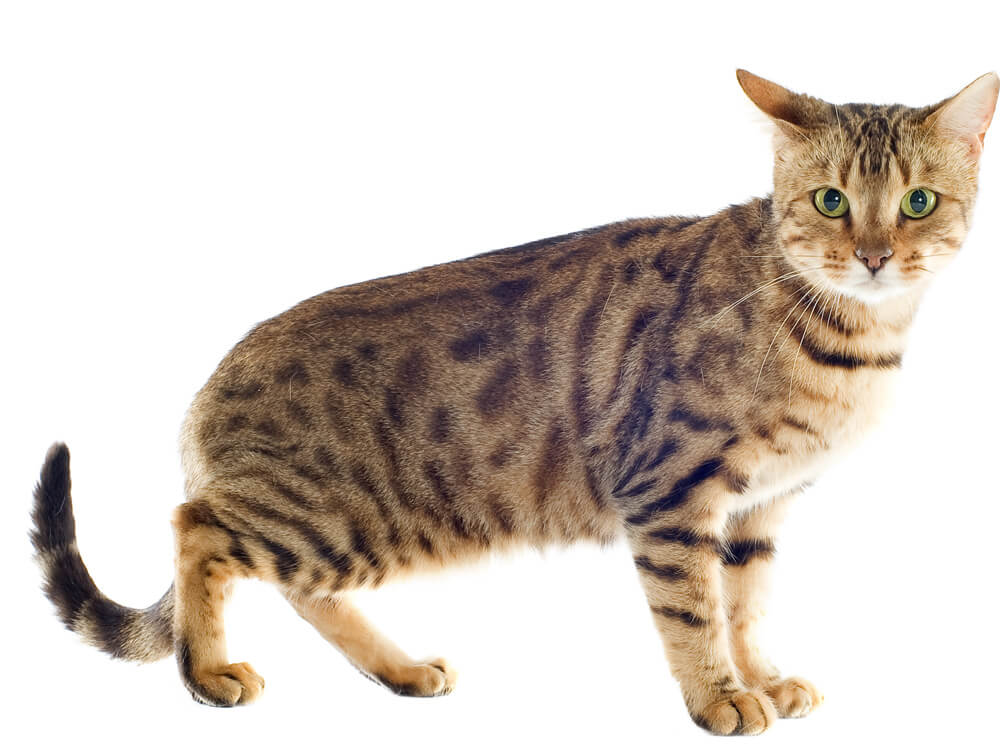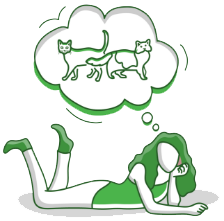
Bengal Breed Pictures
Vital Breed Stats
| Weight: | 4 - 7 kg M | 4 - 7 kg F |
| Life Expectancy: | 12 - 15 years |
Breed Characteristics
| Size: |  |
| Grooming: |  |
| Good with Children: |  |
| Good with other pets: |  |
| Affectionate: |  |
| Active Level: |  |
Give a thumbs up if you love the Bengal

0
More About the Breed
History
The Bengal is a cat that resembles a small leopard with a gentle and affectionate nature. Indeed, this breed was a cross between a domestic shorthair and wild Asian leopard cat. Its name was derived from the latter’s scientific name, Felis bengalensis.
The first two cross-breeding instances actually happened almost at the same time in the US. During the 1950s–1960s, people could buy ALCs at pet shops. A California breeder named Jean Mill accidentally bred an ALC and black tomcat when the two mated. She kept a spotted female and had this offspring cross back to the father, producing kittens with solid colours and spots. Dr. Willard Centerwall crossed Asian leopard cats with domestic cats hoping to produce a hybrid resistant to feline leukaemia. The two worked together, and more breeders became interested in doing the same. Today’s Bengal is a descendant of the Egyptian mau, ocicat, Burmese, and Abyssinian.
The Bengal is the only successful breed between wild and domestic cats. Mill successfully produced a breed without the wild traits through selective breeding. In order for them to be considered purebred, the Bengals should only be mated with other Bengals. It was first given full recognition by The International Cat Association in the US in 1991, followed by other cat associations. The Governing Council of the Cat Fancy recognised it in 1997, but only awarded full championship status in 2005.
Appearance and Grooming
The Bengal is a medium to large cat that is known for its distinctive resemblance to a leopard. Weighing 8 to 15 pounds, it has an athletic, strong, muscular, and agile yet graceful body. It is a full-fledged domestic feline that embodies some physical features of a wild cat. It has a broad head with rounded contours, large oval eyes, medium ears, and a muscular neck.
It has a short and thick coat that feels soft and silky to the touch. It comes in interesting colours and patterns. Examples are black silver tabby, brown tabby, seal mink tabby, black silver spotted, brown silver spotted, and seal silver lynx point. The pelt can be randomly spotted, marbled, or have horizontal patterns. Some may have glittered fur, which sparkles in the light.
Grooming Bengals is generally easy, thanks to its short and close-lying coat. Cats have an extraordinary ability to clean themselves, so frequent grooming is not necessary. Weekly brushing to keep hair healthy is all it needs. However, since this breed loves the water, it will gladly jump into the tub or join you in the shower. Like most felines with short hair, it sheds minimally and more noticeably in spring and summer.
Aside from its coat, make sure to regularly trim nails and brush its teeth. Start doing these whilst they are kittens so they understand that these are normal procedures. Also keep their ears clean to avoid infections.
Temperament and Intelligence
Due to its exotic appearance, the Bengal cat may give off an intimidating aura, but it is very far from wild. Years of careful and selective breeding have eradicated its wild tendencies. Rather, it is charming, sweet, playful, and active. It develops a strong bond with one person in the family. It communicates in a unique, bark-like voice. It really loves water, and would enjoy watching running water and even jump in the shower with its owner. Whilst it enjoys the outdoors, this cat must be kept as an indoor cat.
Make sure to keep this very high-energy breed busy and kept in the presence of people. It does not do well with being left alone because it is a social feline. It does well with children, gentle dogs, and other pets. Supervise interactions with toddlers to avoid accidentally getting hurt because of roughness. It is better to avoid smaller pets because of its strong hunting instinct. It is extremely intelligent and can easily learn. You might think that fetching is strictly for dogs; prepare to be stunned to see it retrieve toys being thrown.
Nutrition and Feeding
Like its Asian leopard cat ancestor, the Bengal is a carnivore that thrives on animal meat. Experts suggest turkey and chicken as main sources. It should take up at least 50% to 80% of its diet. Make sure to only provide high-quality food, may it be homemade or commercial cat food. Avoid cheap brands that contain less meat and low-quality carbohydrates like wheat, soy, and rice. Grain-free vegetables and fruits provide fibre and vitamins. Omega fatty acids are also vital for energy and healthy coat. Fresh, unprocessed raw meat a few times a week can be a great supplement. Do not give in to your Bengal’s expressive eyes and give too many snacks or tables scraps to avoid obesity.
In addition, find a trusted vet you can consult to optimise your cat’s diet and ensure timely vaccinations.
Health and Exercise
- Hip dysplasia
- Patellar luxation
- Flat-chested kitten syndrome
- Pyruvate kinase deficiency
- Hypertrophic cardiomyopathy
- Progressive retinal atrophy (PRA)
Cost of Ownership
If you want to care for a Bengal, you’ll spend £400–£1,500 to buy one. You’ll also spend for insurance, the costs of which can range from £15.5 (basic) to £27 (lifetime) a month. For food, costs may range £15–£20 monthly. With veterinary care costs—vaccinations, boosters, and annual checks—the costs may be over £600 per year.
On average, a Bengal owner may spend about £30–£50 per month. This range also depends on the insurance coverage. For its lifetime (12–16 years), the expenses can range from £4,320 to £9,600. The cost of buying a Bengal kitten is not yet included in this estimate.
Is a Bengal Right for You?
- The Bengal is a highly intelligent and active cat, even cleverer than the Siamese.
- This cat breed requires a lot of physical and mental stimulation. As such, it is suitable for active families experienced in caring for cats and can spend a lot of time for pet recreation.
- The Bengal is immune to feline leukaemia, but due to irresponsible breeding, it is prone to cataracts.
- Its stunning coat and wild look makes the Bengal a unique-looking cat.
- Its short coat and fastidious grooming habits make it very easy to maintain this cat.
- The Bengal has a strong hunting instinct and must be raised with another cat to counter its territorial tendencies.
- This cat should be kept indoors for its safety and that of other wildlife.
